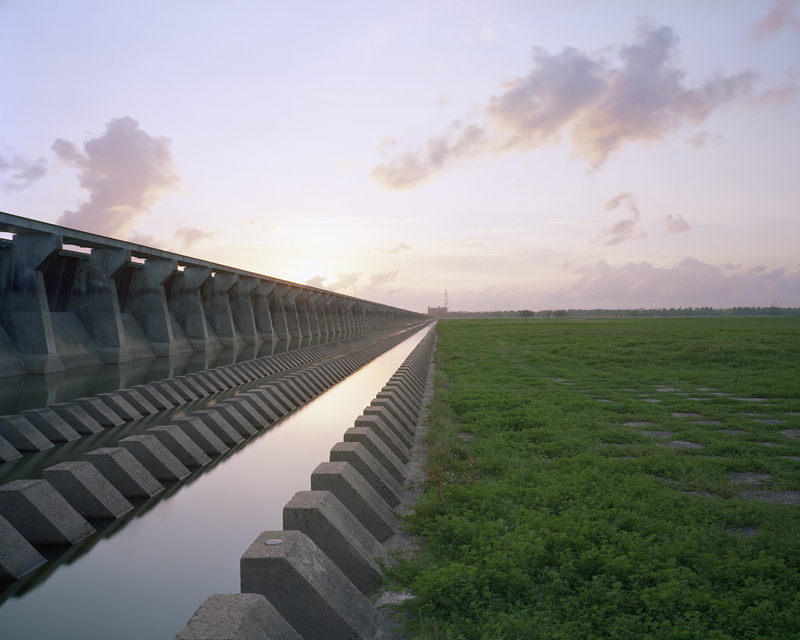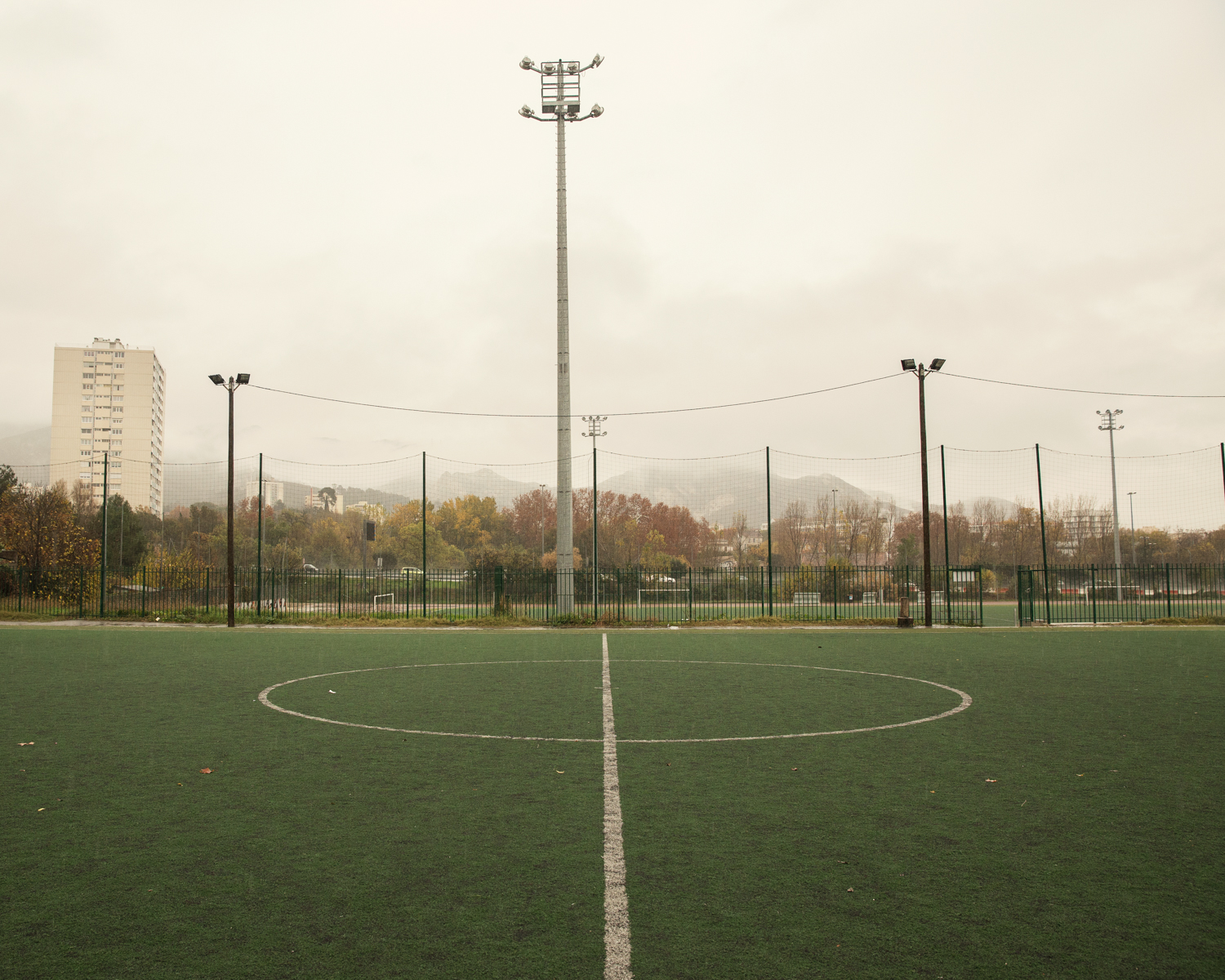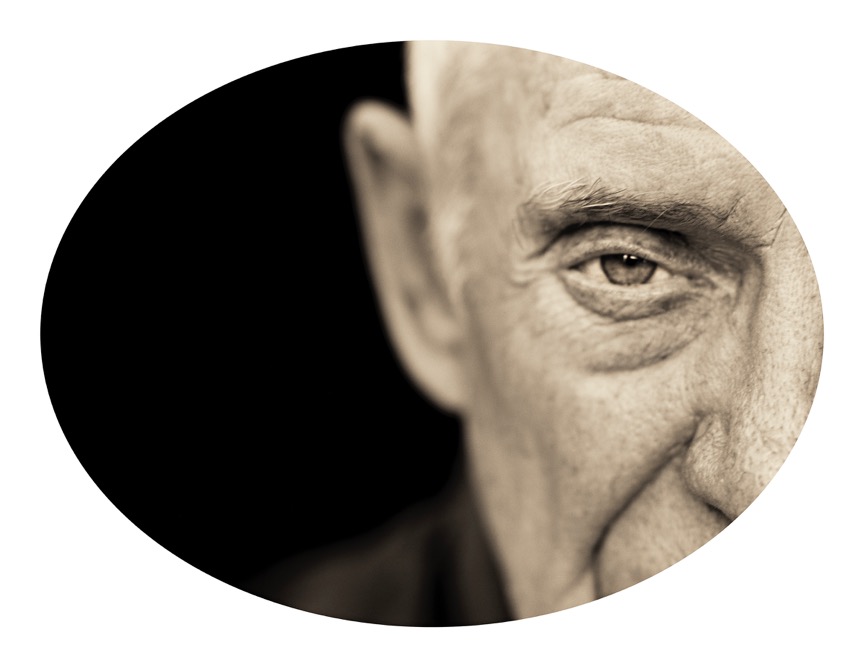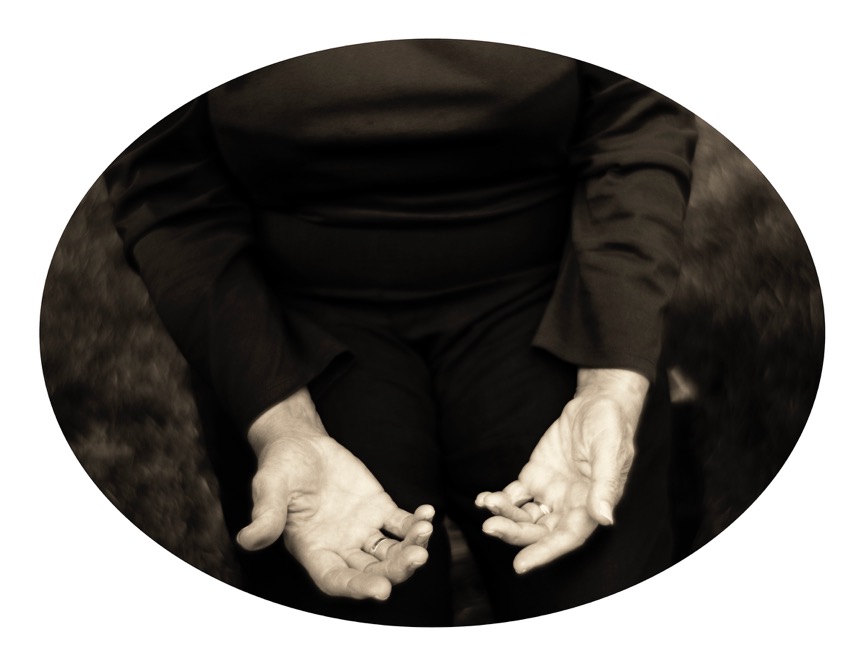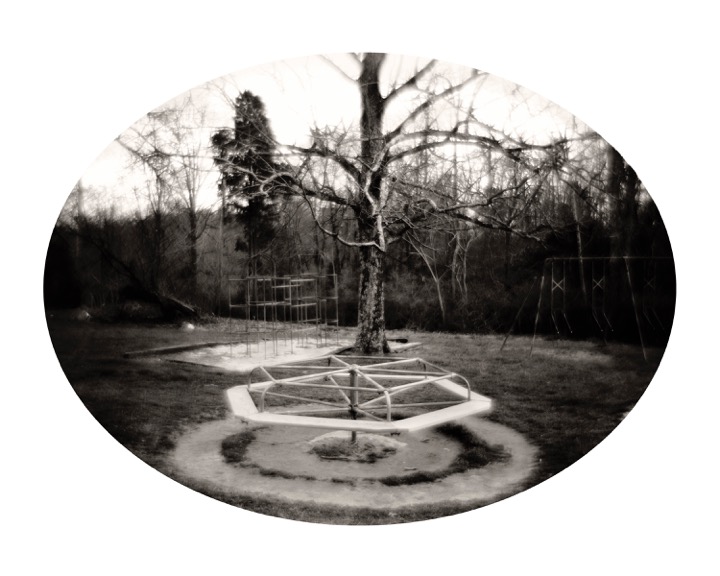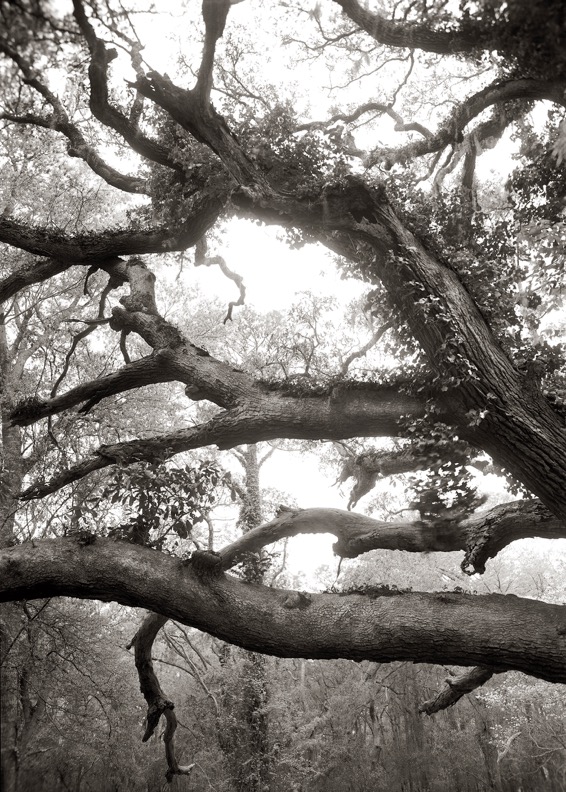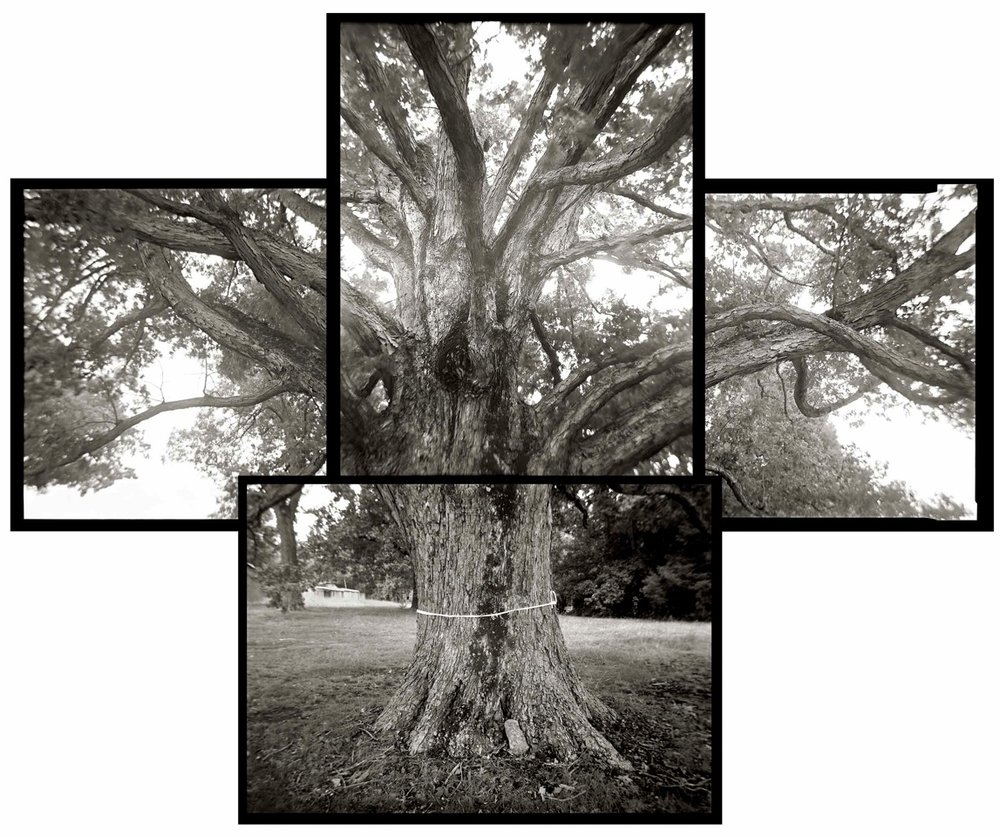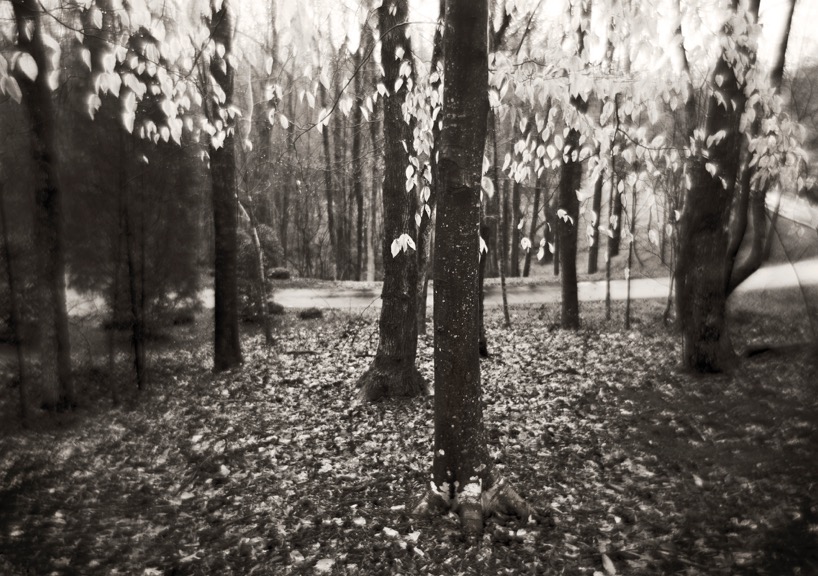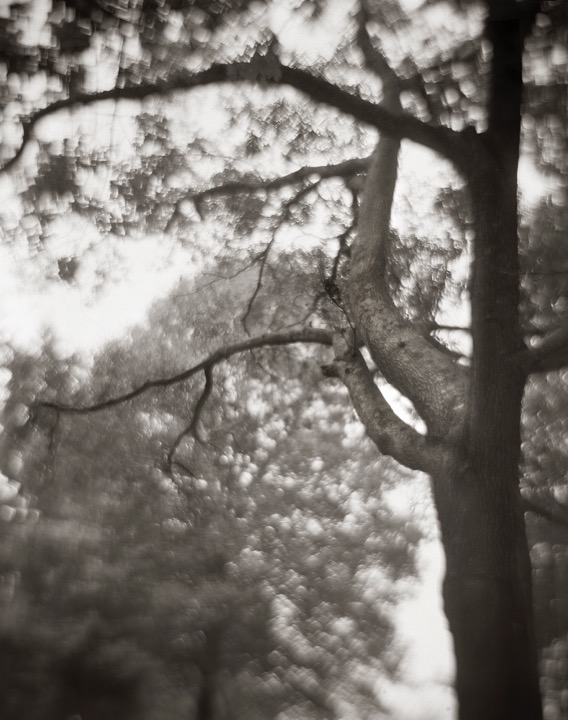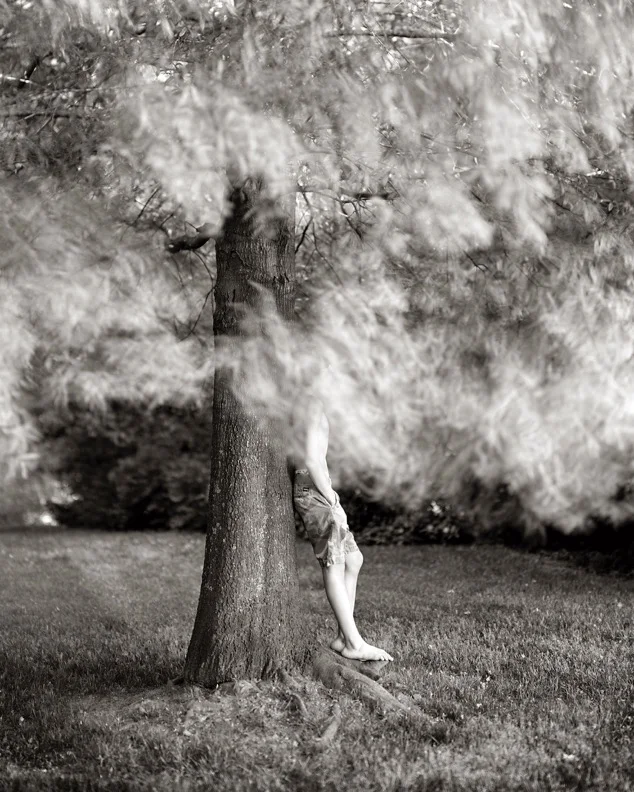Ryan Parker's Hinterland series explores the intermediate zones between the altered and natural landscape: distribution centers, storage complexes, real estate developments, gravel pits. These images bring to our attention and elevate those scenes we see so often yet disregard as unimportant, and by so doing makes us confront our role in the disappearances of so much of the natural landscape in order to satiate society's hunger for "bigger" and "better" and our need to have more and have it now.
Scott B. Davis
Scott B. Davis's recent work pushes landscape photography and the platinum/palladium process in very intriguing ways. He carefully and meticulously creates panoramic diptychs in camera, making pairs of paper negatives and film-based platinum/palladium prints.
Scott has a unique talent in exploiting the view camera's property of displaying the world upside down and backwards; instead of re-inverting the image shown on the ground glass, he composes the image as if it's already oriented correctly, and then further expands the composition by exactly matching horizon lines to create a new panorama. In these images, details aren't important—light and shadow are. The images aren't so much about the land or landscape as they are about space and abstraction.
Scott has a book coming out soon by Radius Books. You can purchase a copy here.
Michael Sherwin
Welcome to the first post of 52 Photographers Vol. 3! This inaugural post features the work of Michael Sherwin, based in West Virginia. For nine years, Michael worked in the American West, during which time he completed a large body of work titled Vanishing Points.
The project sprang out of a photograph Michael made of a local shopping center, the Suncrest Towne Center, in his neighborhood which had been built over an ancient burial ground of the Monongahela tribe. At the time, he had no expectations that much would come out of it, but as time went on, he learned more about the Native history in the area and greater region and eventually a project began to be manifested.
This important body of work confronts the viewer with some of the darker parts of America's past. The respect, and reverence, and sometimes lamentation Michael has for these places is evident in the photographs. The technical and formal beauty of the photographs draw the viewer in, while the content of the images, or the history of the scenes depicted therein can be quite grim, a duality Michael often attempts to achieve. He mentions this concept of duality in a few interviews: the one previously mentioned, and specifically in the case of the Suncrest Towne Center:
In a relatively short period of time, the Suncrest Towne Center grew into a bustling shopping center complete with all the usual, and recognizable, storefronts and signage. It was anywhere America, yet at the same time it held on to a mysterious and spiritually significant past. This duality fascinated me.
Brad Moore
Brad Moore has a minimalist compositional style I really quite like.
Pay a visit to Brad’s website to see more of his work.
Karen Klinedinst
These images are photographs! Not paintings from one of the Hudson River School of painters! And I really love the painterly style in Karen Klinedinst’s body of work, The Emotional Landscape.
It’s worth checking out the rest of Karen’s work on her website.
Al Brydon
Al Brydon’s work has some really great mood and atmosphere.
When I first saw his work, it was like a light lit up in my head. Viewing his work has given me new permissions in my own work that I’d never really had, or known existed before.
View more of Al’s work on his website.
Marion Belanger
I came across Marion Belanger’s work some time ago, and I really like her aesthetic.
View more of Marion’s fantastic work on her website.
Chris McCaw
Chris McCaw has some really great work. His long exposures allow the sun to literally burn a trail into the paper loaded in the camera.
Visit his website to view more of his work.
Mary Sloane
Mary Sloane has some interesting work of dilapidated billboards along highways in the American Southwest.
There's something I really love about Mary's aesthetic and the bland, bleak landscapes in which these billboards reside.
Check out more of Mary's work at marycsloane.com
Beth Moon
"Time is the shape of an old oak as the winds caress and sculpt the bark, defining the hardship and beauty. Time is the trunk that splits apart in great age to accommodate the tempest. Evidence of time is revealed in the furrowed bark of an ancient tree, gnarled, crooked, and beautiful," says Beth Moon in her artist statement for her body of work titled Portraits of Time. Trees are a great subject to use to define time, and Beth's photographs in Portraits of Time are sublime. From ancient Baobab trees that can live to be over 2000 years old (The Panke Baobab in Zimbabwe died in 2011 and was around 2500 years old), to giant oak trees, to towering cedars, these photographs show the majesty and awe of some of the organisms that grow on this planet.
Her body of work, Island of the Dragon's Blood does much the same thing, focusing on the dragon's blood trees (a name given by the scarlet colored resin that flows through them) and other flora of Socotra, an island in the Arabian Sea.
Beth has some really great work, which you can see on her website.
Charles Petillon
Whimsical is what comes to mind when I look at Charles Petillon's photographs.
He takes bunches of white balloons and arranges and places them in the landscape. These bunches of balloons have the feel of a cloud that has descended to hover just feet above the ground, and the luminance they add to the land is really quite beautiful.
Mutation 2
33 KM 1
Igloo 2
Jeff Frost
If you like time lapse photography, night photography, and video, you'll enjoy Jeff Frost's work. He even crosses over into Earth Art a bit. I've been looking at Jeff's work for a while mainly through his Instagram feed, but also through his website, and his videos hosted on Vimeo.
Jeff was kind enough to answer a few questions about his work that you can read below:
Would you mind telling me a bit about your background as a photographer?
My background is really as a musician. So I tend to think of photography and contemporary art in terms of rhythm, texture, and mood. The timing of a video edit is as delicate as the fixing I used to have to do to for one of my shitty ex-drummers. If you're getting it right, you're 'in the pocket' in both mediums, and that can come down to mere milliseconds of difference. Time lapse itself is as mechanical and precise as a Roland 808, which can make it difficult to humanize, but also prevents an invigorating challenge.
I never imagined myself being a photographer or a film maker. When I realized the music thing wasn't going to work out, I went to a school that essentially taught me the basics of commercial photography: how to shoot headshots and weddings, studio lighting, product photography, etc. All of which I did as student to scrape by. As I was shooting weddings I'd find my thoughts wandering. I'd make estimates on how long a couple would last before the divorce. Then I'd feel guilty and think, 'Well this can't be healthy.' In class I was rebelling by creating fine art instead of commercial work. The weirder and more complex I could make it, the better. This lead to painting optical illusions in abandoned houses, which I think of as some sort of minimalist-maximalist paradox in motion, and weaved into a non-linear film narrative.
Who are some of your influences as a photographer, and who is your favorite photographer?
My influences are also more towards the music and painting side, but I'll get to a few photographers as well. Musicians who influenced me early on were a lot of the alternative rock stuff like REM, Wire, the Cure, but when I heard Nine Inch Nails "ruining" sounds it really changed how I think. Right now my influences are becoming more abstract on that front: John Cage, Autechre, Aphex Twin, Kim Cascone, Christina Kubisch. All of this filters into how I shoot photography, make soundtracks, and work on sound design.
I love the minimalist painters (Frank Stella, Ellsworth Kelly, Barnett Newman, Mark Rothko, Piet Mondrian, etc), but really I love every era of painting. Classical painters such as Caravaggio and Bosch are examples of wild innovation within their time, and also examples of how to get away with it. I adore Andy Warhol and pop art. Street art has had a huge influence on me as well, and that's where my paintings of abandoned buildings stems from.
For photographers the ones I admire and am influenced by have little to do with my work aesthetically (in most cases). The fearless, tireless, tenacity of Diane Arbus has always blown me away. Richard Avedon honing his portraiture craft to include interactions designed specifically to illicit emotional responses from specific people is an example, for me, of how productive it can be for a photographer to step away from passivity and jump into the thick of things as well as the importance of brilliant planning. Lee Friedlander is one example where you can at least somewhat draw aesthetic parallels. The way he composes and plays with the psychological reaction of the viewer has always had a huge impact on me; same goes for Edward Burtynsky in a much different arena.
I can't say that I have a single favorite. Too hard to choose.
I love when artists make work that is interactive and collaborative with the landscape, and there is a lot of that in Jeff's work, and my favorite examples are found in his Flawed Symmetry of Prediction body of work.
Alexander Davis
I've been following Alexander Davis on Instagram for a while now, and I've really loved his work.
I asked him a few questions about himself and his photography. You can read about him below:
Would you mind telling me a bit about your background as a photographer? How long have you been making photographs?
“My history as a photographer is rather limited, I’m really no expert. Professionally, my background is in advertising and film post-production, commercial music mainly, and my education is in Philosophy and Audio Engineering. I picked up a Fujifilm X100-T in 2015, looking for a new personal creative outlet as music had really become “work” and I needed something else just for me. I was living in New York at the time and would go on long walks around the city, taking photos, experimenting with editing them. I didn’t realize how meditative this practice can be, but it quickly become an important part of my life. Later in 2015 I moved to Los Angeles and had a brief stint working at an editorial/post shop in Santa Monica. Ultimately I had to get out of “the industry” for the sake of my mental health and a desire, at the age of 30, to focus on my own creative work instead of producing other people’s. I spent the next year driving all over California and taking loads of photos, then last summer I felt it was time to get out of the city altogether and moved back home to Colorado. My long-term goal is to have a physical gallery space at some point, transition to medium-format to start producing much larger prints and hand-build the frames. I want to create real things of value for people to put in their homes, keep it local and off the internet as much as possible. ”
Who are your influences? Who is your favorite photographer?
“Oh man, pedestrian opinion maybe but I love Slim Aarons. It’s not what I do at all but I’m a sucker for that 60s jet-set joie de vivre stuff. In terms of inspiration, I’ve always admired the work of cinematographers and colorists since working in post and try to apply those types of grading techniques to my stills. I love everything Roger Deakins ever did, particularly Sicario. The look of that film and the setting are amazing. It’s similar but much more vivid than No Country for Old Men, which is pretty universally loved by photographers. I like to look at a lot of Americana, being a Colorado native, have got some Joel Sternfeld and Bill Owens books around the house. I saw Christopher Williams’ The Production Line of Happiness retrospective in NYC around the time I first started shooting. I think I was really consciously turned on by the look of film for the first time then. Lately I’ve been spending less time browsing Instagram than I used to. There’s so much great work out there, but I feel like I’ve just been looking at too much photography, perhaps feeling overwhelmed with influence and finding it difficult to really connect with people’s work due to the cursed algorithm and the nature of the platform itself. On top of that I’ve now lost any desire to go to Iceland. Ever. Truly, though, I have met some absolutely wonderful, immensely talented people through Instagram and I am endlessly appreciative for all the kind words. It’s been amazing to find a place in the community and I do love how enthusiastic many of us are about each other’s work, discussing techniques and locations and just messaging to say hello. That’s been a real joy.”
Against The Modern World No. 3
About Against The Modern World, he says:
“This series was taken at the end of April in Eldorado Canyon, a small town and state park just south of Boulder, Colorado. It was snowing with dense clouds moving between and around the jagged rocky features of the canyon, subtle spots of light coming through every so often which made for very dramatic atmosphere.”
Against The Modern World No. 6
“The Organ” from The Great American West
My morning in Arches National Park last July was flat grey overcast, which was actually a nice change from all the other days I’ve had there when the light was typically very harsh. The Organ is an impressive edifice, roughly 500ft tall, and I really like how its stature came through in the image. I did a vertical composition as well, which can be seen in my 4x5 editions.
“Mt. Lincoln” from The Great American West
This was taken last November above Hoosier Pass, south of Breckenridge in the Mosquito Range. It’s a fairly low-key 4x4 trail up above timberline. Mt Lincoln is 14,295ft at its peak, which is seen here scraping moisture out of the atmosphere.
“Morning Light” from The Great American West
I take my morning coffee in the car and just drive around nearby rural areas a few days a week. The early light against the foothills makes for beautiful views and subtle contrasts, just nice quiet moments.
Subtlety No. 4
A morning drive through a particularly dense fog in Niwot, Colorado. Left Hand Creek is seen winding through layers of trees.
Subtlety No. 5
A panorama looking south toward Boulder over Left Hand Reservoir, taken from Neva Road.
Subtlety No. 10
A foggy morning somewhere along Buckhorn Road, west of Masonville, Colorado.
Bryon Darby
In the fall of 2016 I felt I needed to seek out other photographers and artists in my area, and either create or join a community of artists that had as a goal to help each other in our creative endeavors. Part of that search lead me to a series of lectures done at Utah State University by artists who came to give a presentation to students about their profession, and how they got to where they are now, and work they've done, etc...
One of those presenters was Bryon Darby.
9 hours in 9 panels
Distant Aircraft No. 3
My biggest take away from his presentation was what he said about making work:
“Make work first and figure things out later...Just make! The only sin is not making!”
Bryon is an ASU alum, where he studied under one of my favorite photographers, Mark Klett, and his influence shows. Not directly in his work, but more so in his ideas and concepts, and never in a derivative way.
Entire 101 Freeway Loop, 91.2 Miles in 82 Minutes
Walking the Barracks Fence
Munitions Bunkers
Old Barracks Site
Seventy Flights in Ninety Minutes
His most recent work is his New Farmers project. It is a collaboration between himself, a sociologist, and designer, and documents a new generation of farmers in the American Mid-West.
Offset Newsprint, 11 x 21.5 inches, 24 pages (with Hossler & Stock)
Amy Saunders, Jefferson County, Kansas
Natayla Lowther, Douglass County, Kansas
Sweet Love Farm, Jefferson County
Go look at more of Bryon's great photography on his website.
Carleton Watkins (American, 1829 - 1916)
[Piwayac - Vernal Fall - 300 ft. Yo Semite], 1861, Albumen silver print
40.2 × 52.1 cm (15 13/16 × 20 1/2 in.)
The J. Paul Getty Museum, Los Angeles
Carleton Watkins
Carleton Watkins (American, 1829 - 1916)
El Capitan, 3600 ft., Yo Semite, negative 1861; print about 1866, Albumen silver print
39.1 × 51.3 cm (15 3/8 × 20 3/16 in.)
The J. Paul Getty Museum, Los Angeles
Carleton Watkins (American, 1829 - 1916)
View from Camp Grove down the Valley - Yo Semite, 1861, Albumen silver print
39.1 × 52.5 cm (15 3/8 × 20 11/16 in.)
The J. Paul Getty Museum, Los Angeles
[Stream with trees and mountains in background, Yosemite Valley, Calif.]
Carleton Watkins (American, 1829 - 1916)
[The Devil's Slide, Utah], 1873 - 1874, Albumen silver print
52.1 × 39.1 cm (20 1/2 × 15 3/8 in.)
The J. Paul Getty Museum, Los Angeles
https://www.carletonwatkins.org/
Jeff Rich
Jeff Rich has been photographing the Mississippi River Watershed for several years now.
Rail Bridge, Smith Mill Creek, Asheville, North Carolina, 2006
Watermain for the City of Asheville, The Swannanoa River, Black Mountain, North Carolina, 2007
So many of his photographs give me a guilty pleasure: they're beautiful photographs, but what's depicted in the photographs of what has happened and/or is happening to the landscape is frustrating, infuriating or even horrifying.
The sorts of scenes like the one below are a great example of what I mean.
Campground, The French Broad River, Asheville, North Carolina, 2006
Brown family farm, North Fork of the Swannanoa River, Black Mountain, North Carolina, 2007
Hominy Creek, Asheville, North Carolina, 2006
Coal Fly Ash Spill, Harriman, Tennessee, 2009
Raccoon Mountain Pumped Storage Plant Outflow, Tennessee River, Chattanooga, Tennessee, 2010
Bonnet Carré Spillway, Mississippi River, St Charles Parish, Louisiana, 2012
Check more of Jeff's work on his website.
Eadweard Muybridge
After last month's post on Timothy O'Sullivan, I thought it might be fun to make that a pattern, and talk about some of my influences each month.
Eadweard Muybridge didn't immediately become one of my influences. I think in my History of Photography class we mainly discussed his motion studies and experimentation. But I could be wrong; I was in Seattle for half of that semester while I was prepared to donate bone marrow to my brother who was undergoing treatment for Leukemia. It wasn't until about three years after that class that I really began paying attention to his landscape work he did in Yosemite.
Today, Muybridge is most known for his motion studies, which began with him being hired to settle a bet between two men, one of whom was Leland Stanford. The bet was whether a horse, when galloping had all four hooves off the ground, or if an animal that size was always in contact with the ground. Muybridge was hired, and devised a system of 12 cameras set at intervals along a race track, which was all in white. A trip wire was attached to each camera so that when the horse passed in front of it, the shutter was tripped and the exposure was made. This was in the days of wet plate collodion, when exposures were seconds long, so it really is remarkable for Muybridge to have figured out how to reduce the exposure time enough to stop motion the way he did. This led him to perform many more studies of animals and humans in motion. These studies ultimately led to the invention of the motion picture.
Though most known for the motion studies, Muybridge started out his professional photographic career as a landscape and architectural photographer. He photographed San Francisco, and surrounding areas including Yosemite. Some of the scenes he photographed in Yosemite were made from the same point as photographs made by his contemporary and competitor, Carleton Watkins.
For an excellent biography on Muybridge, read Rebecca Solnit's book River of Shadows: Eadweard Muybridge and the Technological Wild West
Or if you don't want to buy a book, you can read this excellent bio over at Imaging-Resource.
Or you can just check out the Wikipedia article on Muybridge.
Simon Harsent
Simon Harsent has some really nice landscape photography. I love his color palettes.
in addition to his landscape work, Simon also has some nice portrait photography as well. These two are from his Great Britain Hooligans body of work.
You can go view the rest of Simon's work on his website.
Linda Foard Roberts
Linda Foard Roberts has some really breathtaking work. There is so much emotion and depth in her photographs. It's been a while since I've been impacted so deeply and emotionally by someone's photographs. At least in a way that is deeper than just seeing a nice photograph and recognizing/acknowledging the skill or craftsmanship of the photographer, and their ability to compose a photograph. These images stir up memories! They bring you right in to Linda's world, and make you feel as if you're a part of it as well. Many of them have such a dreamy quality to them.
Wisdom
My Mother’s Grace
Last Day of Winter
Limbs, over 100 years old
Spared Tree
The Road Home
Fallen
Aging Grace
Tree, which held our old swing
A Measure of Time, both thirteen years old
Nicole at Fifteen
I asked Linda about her influences as a photographer, and she responded with this:
“My early influences were many and include Paul Strand, W. Eugene Smith, Edward Steichen, Alfred Stieglitz, Dorothea Lange, Imogen Cunningham and later Diane Arbus. I have always been interested in metaphor and how the camera can convey emotion.
I also have tremendous respect for the authentic work and voices of Emmet Gowin, Sally Mann and Josef Sudek who gave us intimate views of their lives, forever changing the world of photography for me. My work has always been an extension of myself but their work allowed me to unselfconsciously find inspiration from home, looking for answers to the larger philosophical themes of life. There was a time when I believed you had to travel the world to be inspired. While working on these series, I wanted to document, not what is new to me, but what is a part of me. Over the years, I have discovered that it has as much to do with what you are feeling as it does with what you are seeing.”
Jim Stone
Jim Stone is the juror for PhotoSpiva’s 2009 33rd Annual National Photographic Competition (submission deadline is Friday, are you ready?). I decided to check his website out to find a little bit more about him, and see his own work and like it quite a bit. Here are a couple of my favorites:


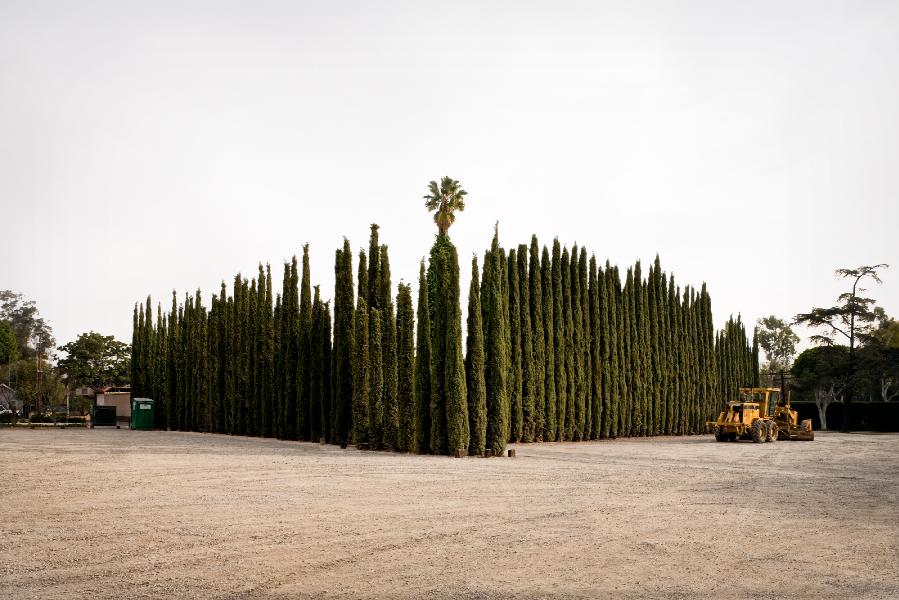
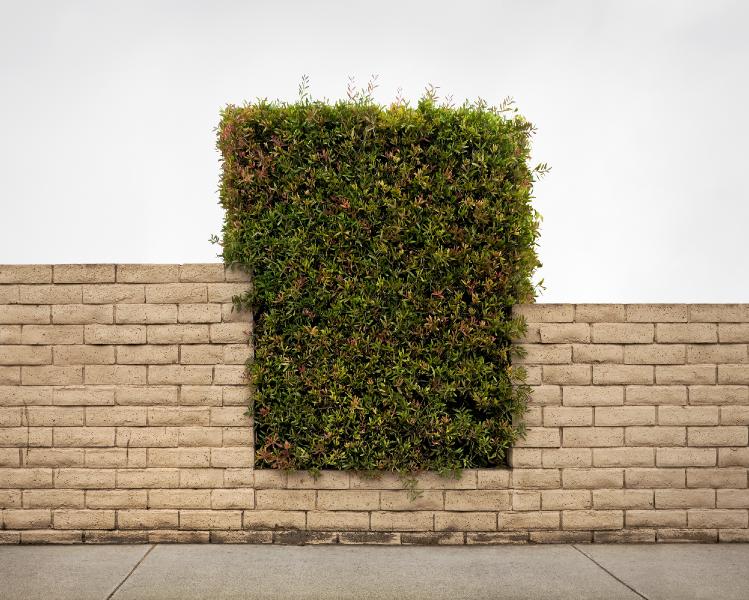
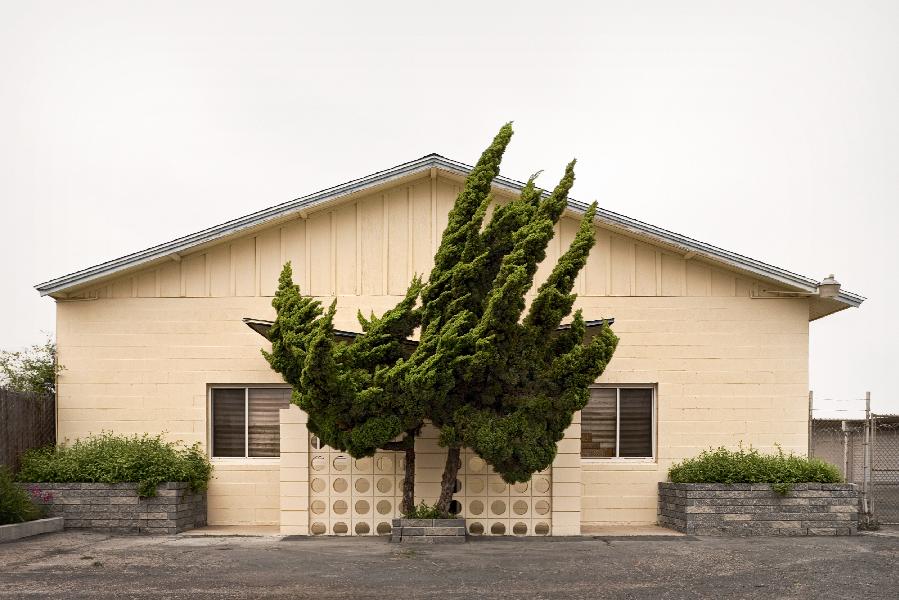
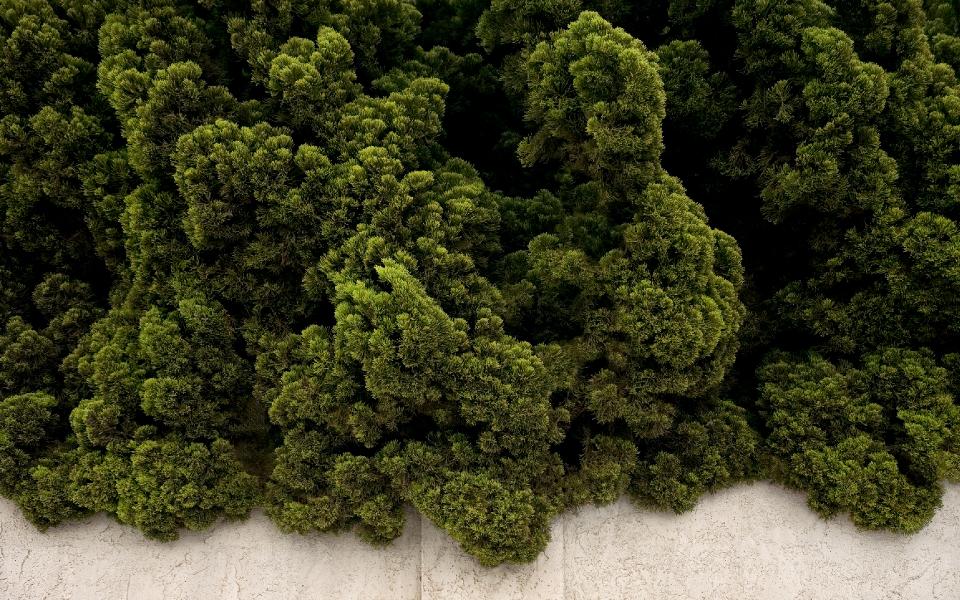
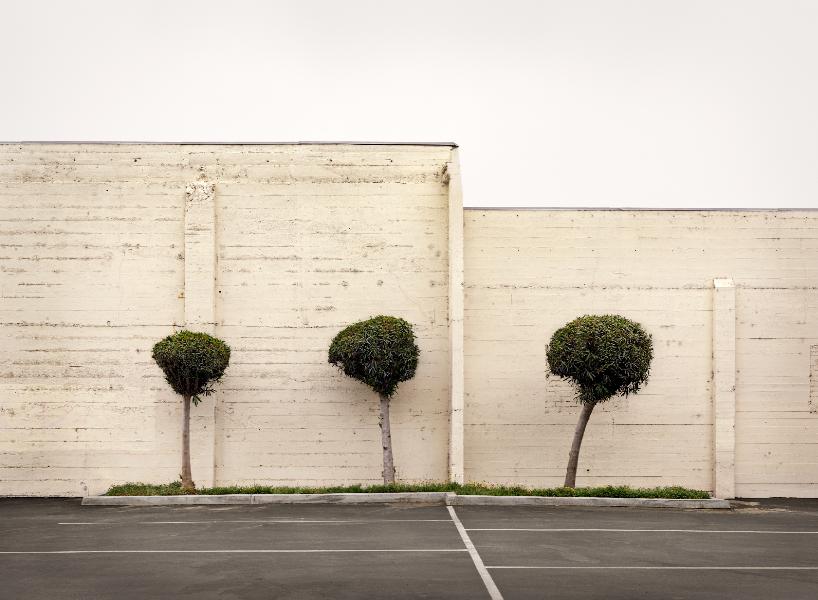






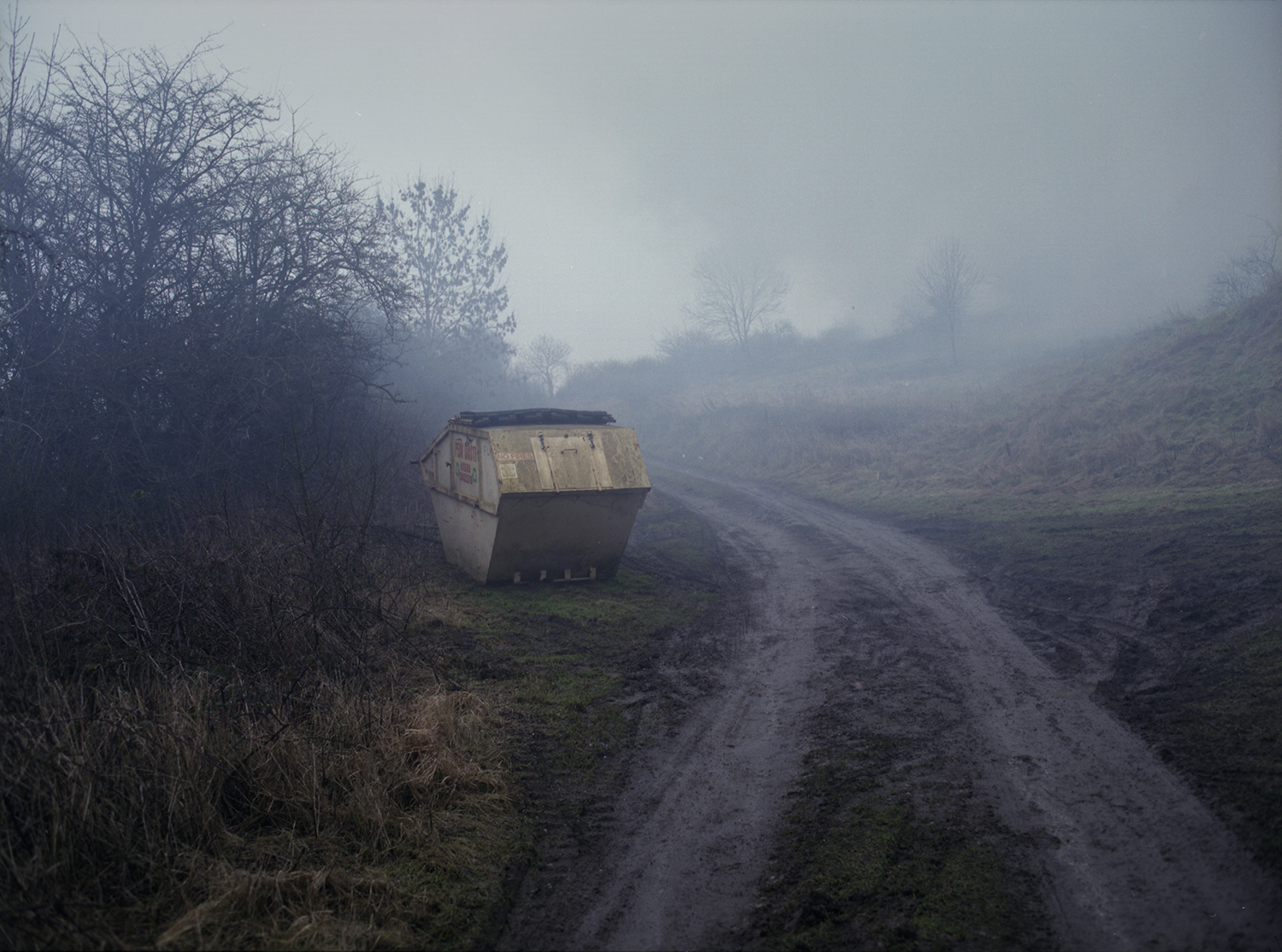


















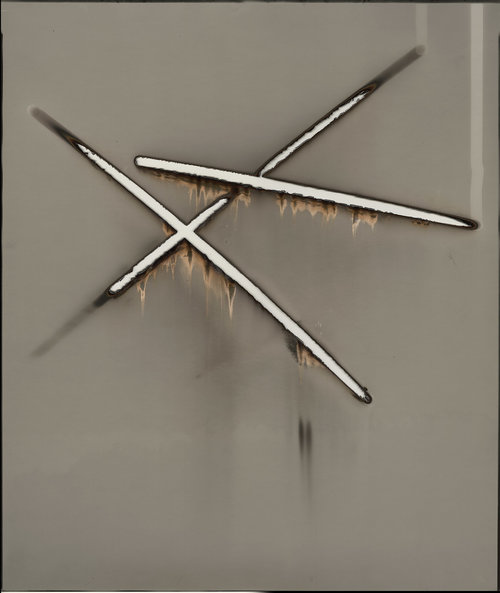








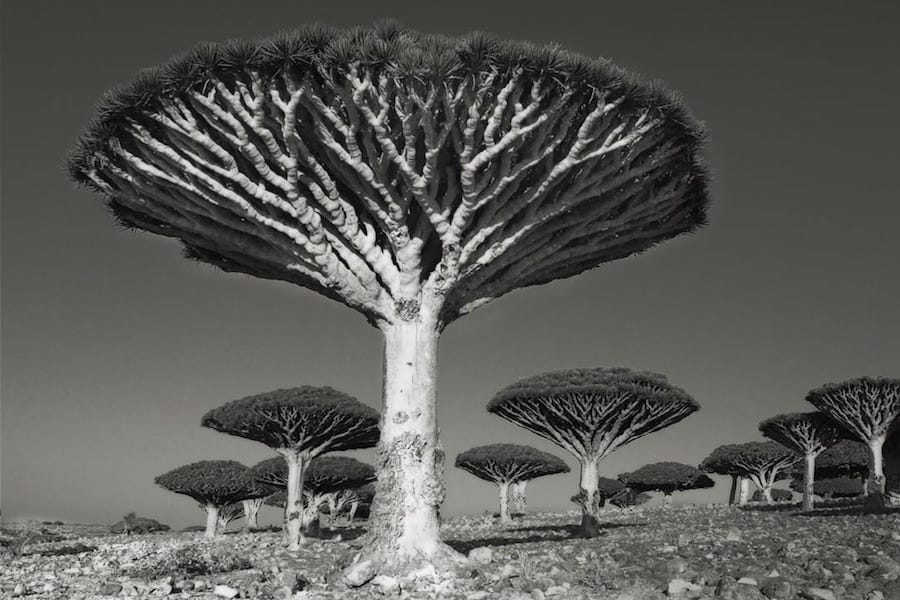



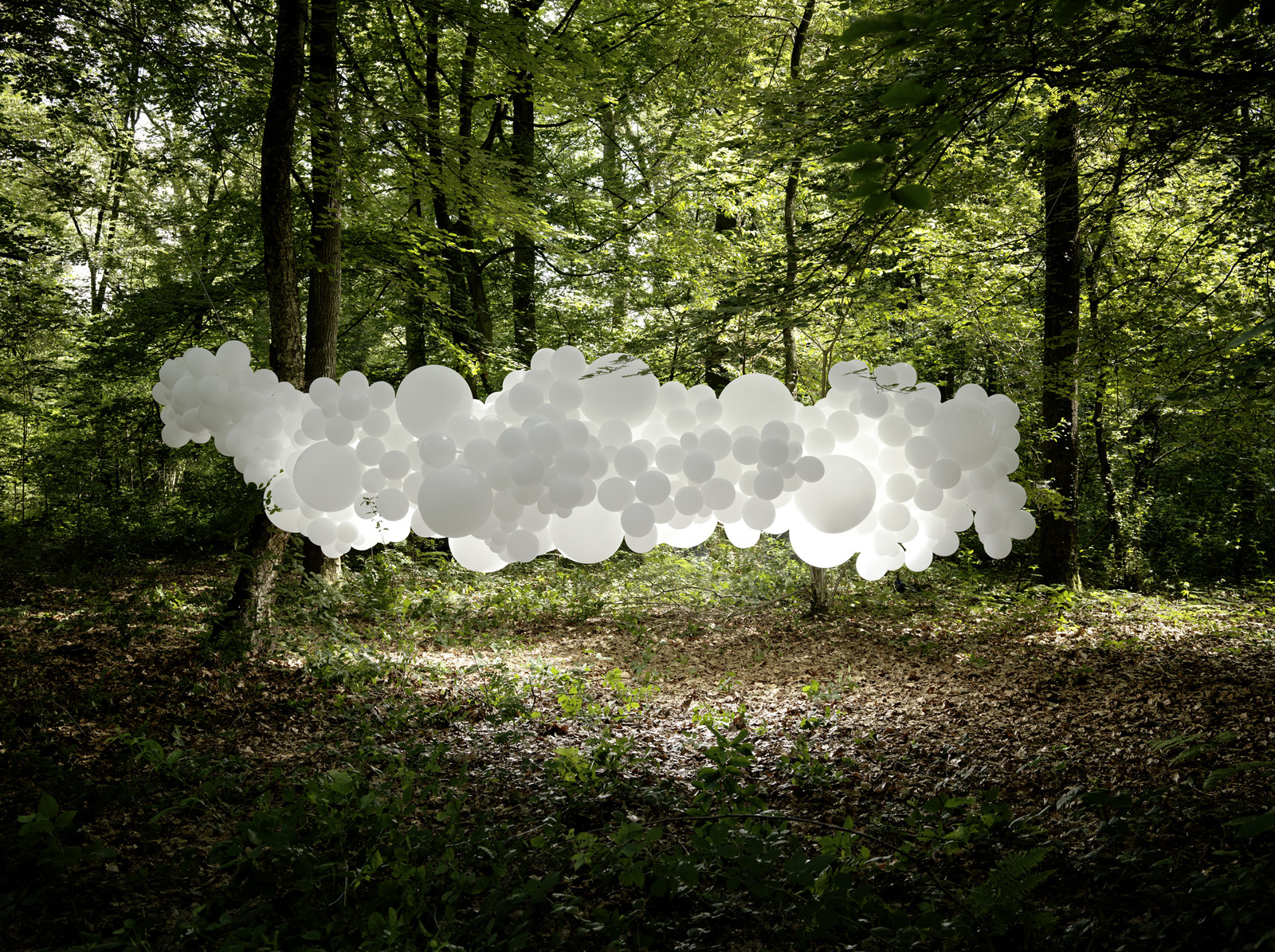



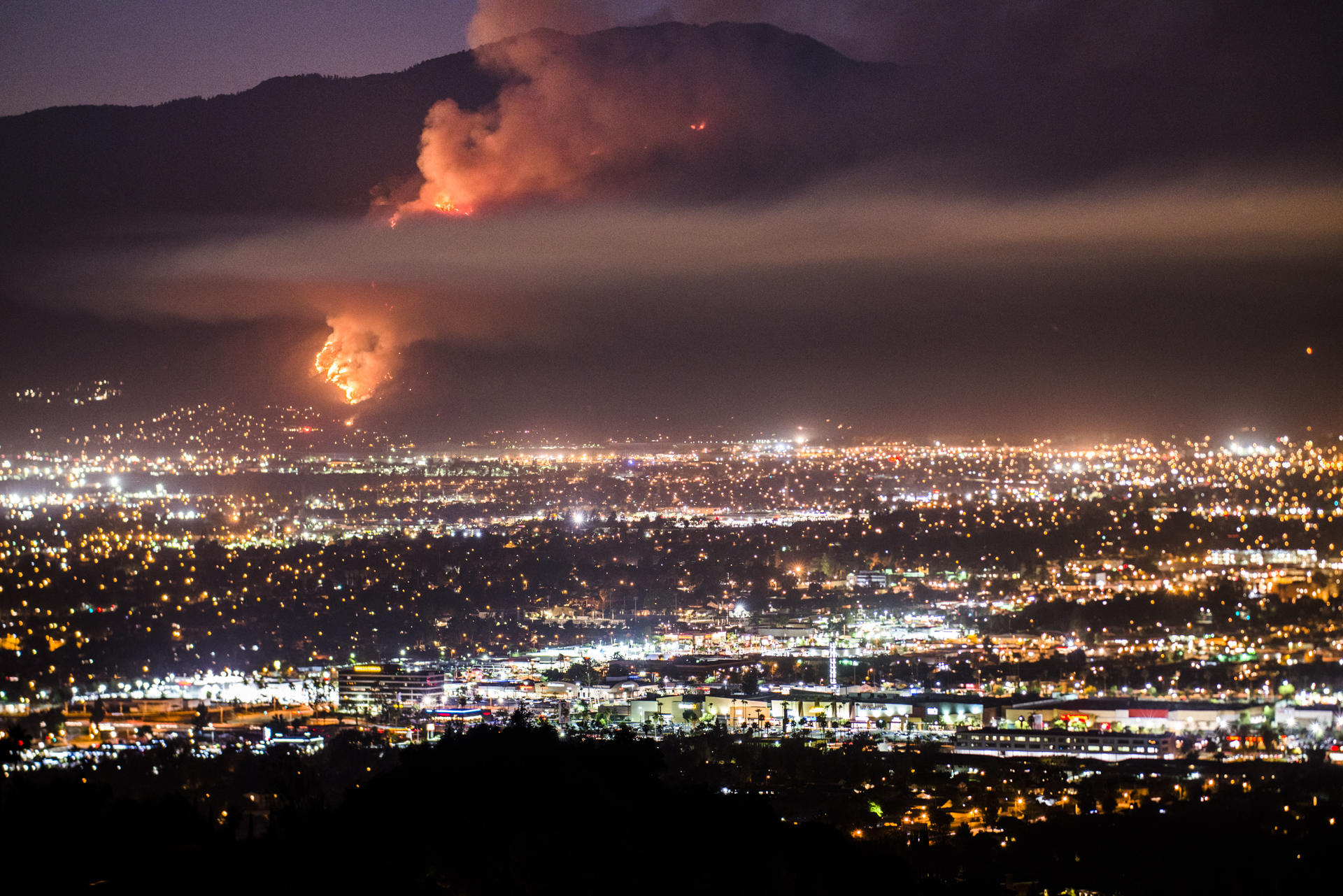




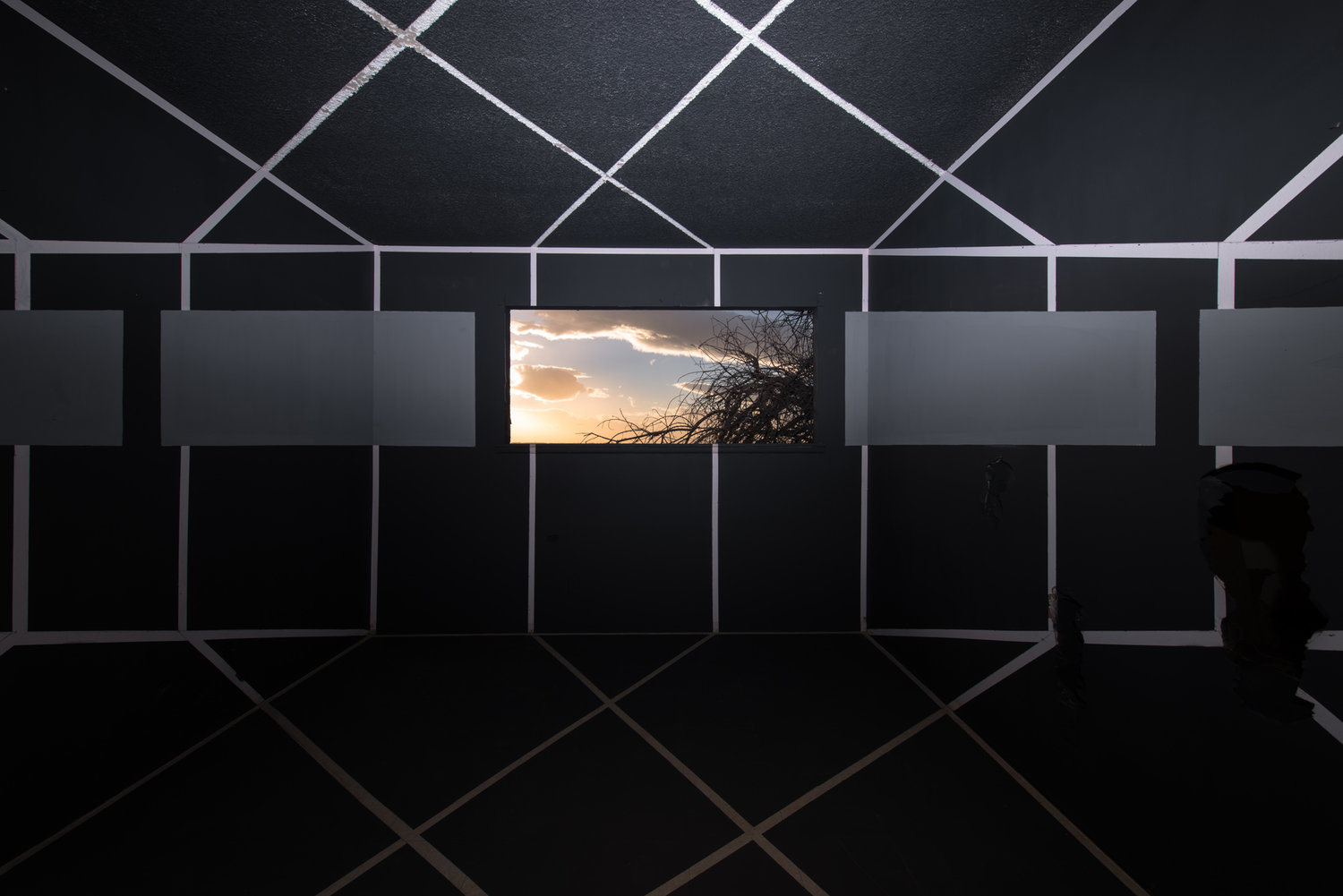
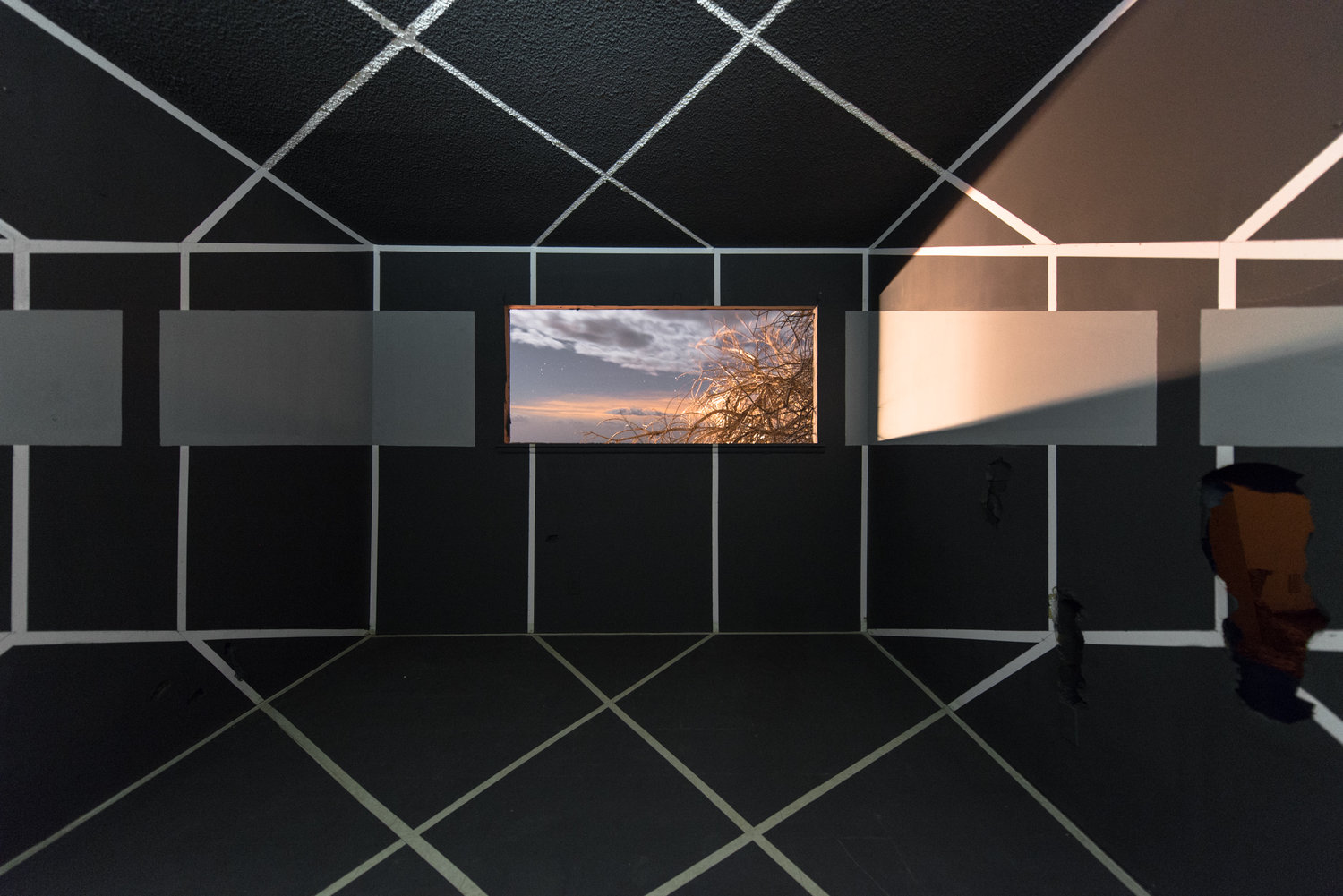
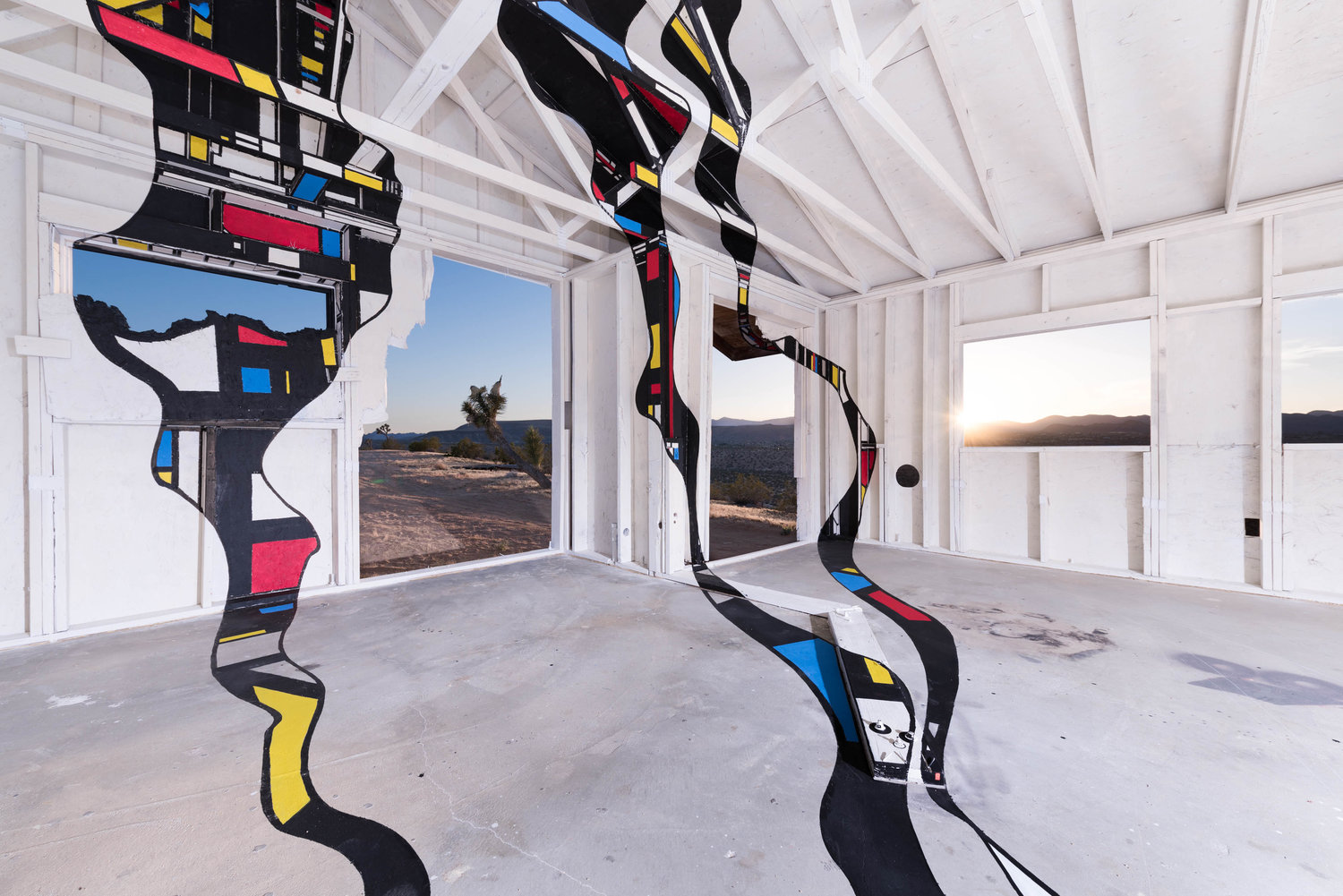
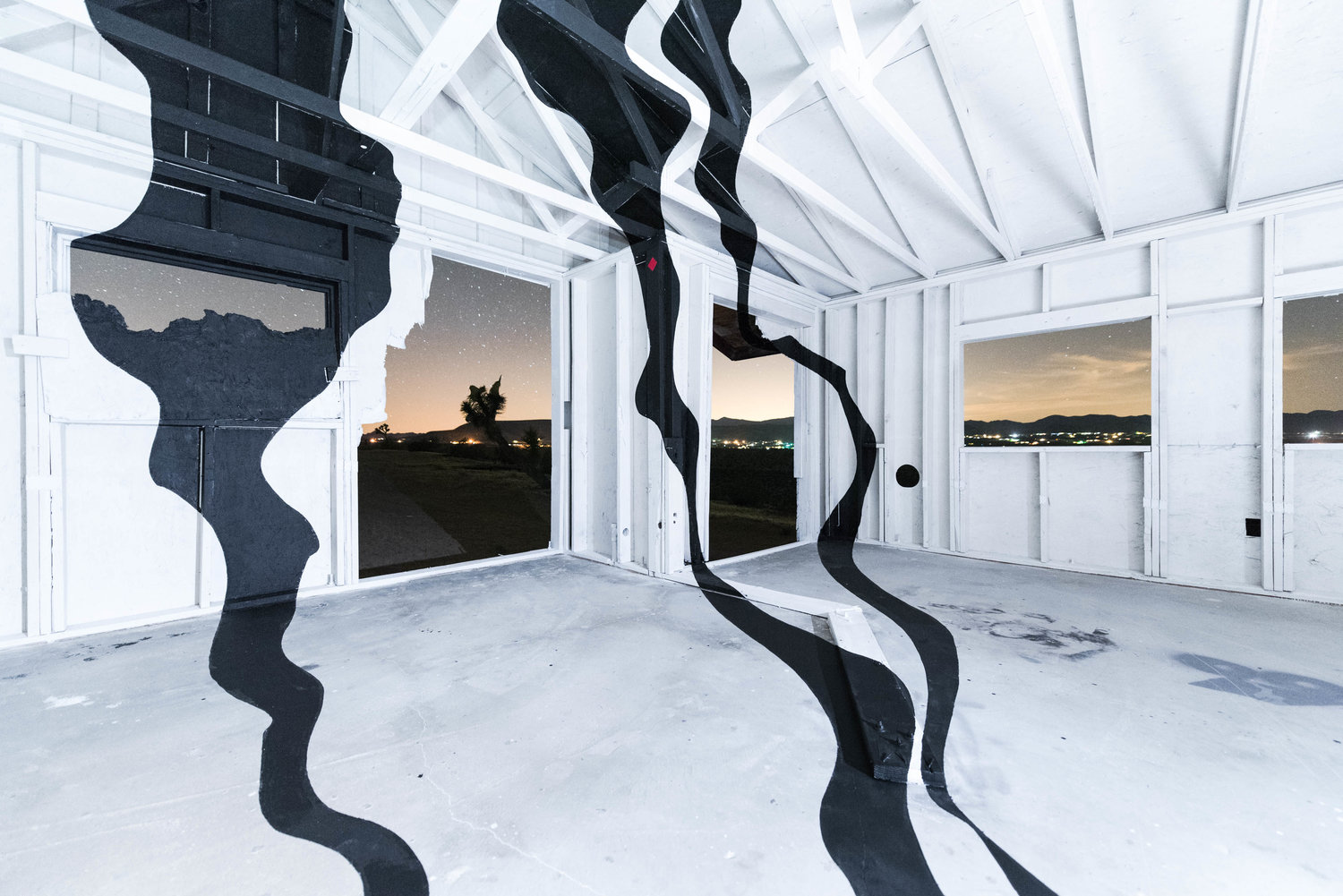
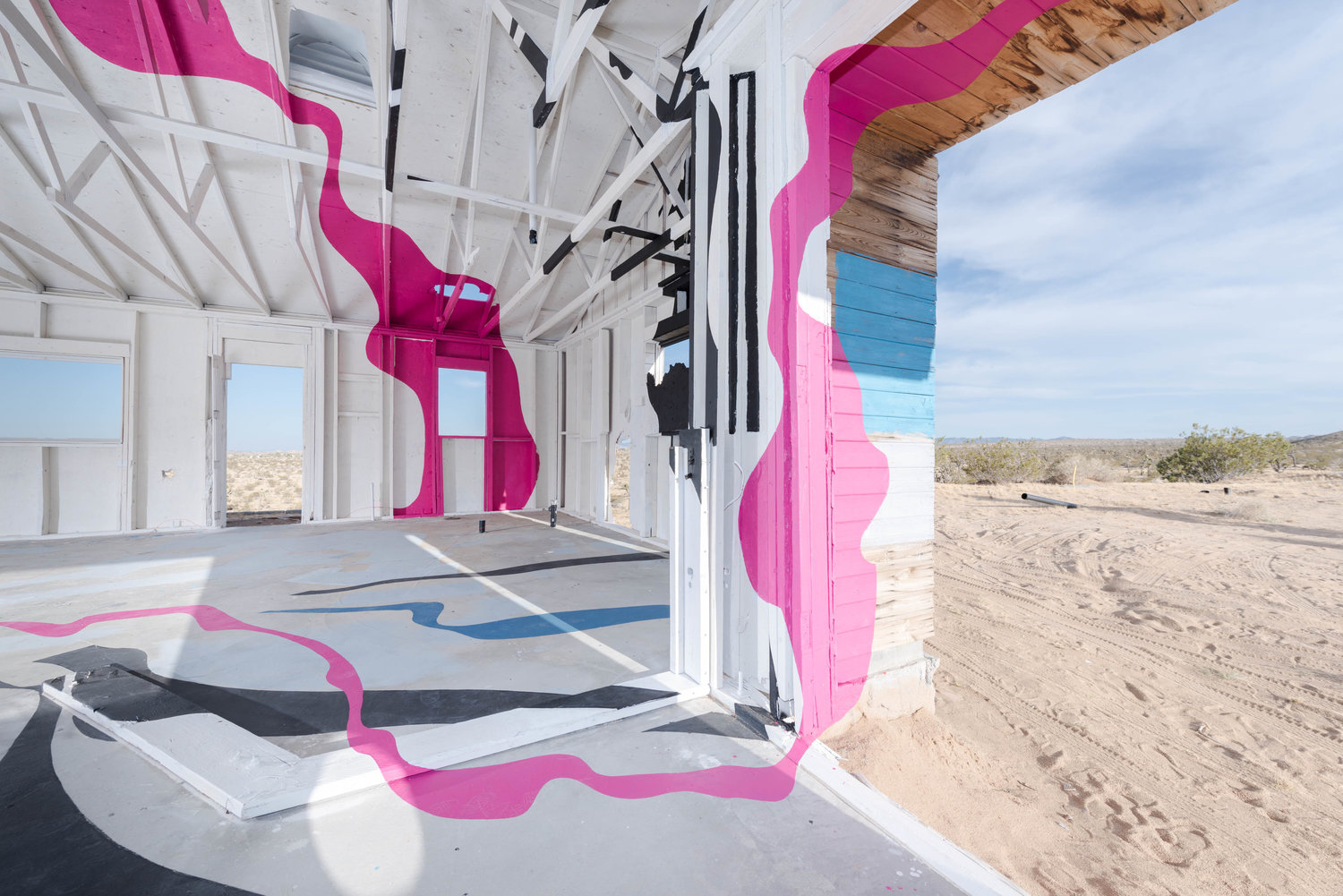
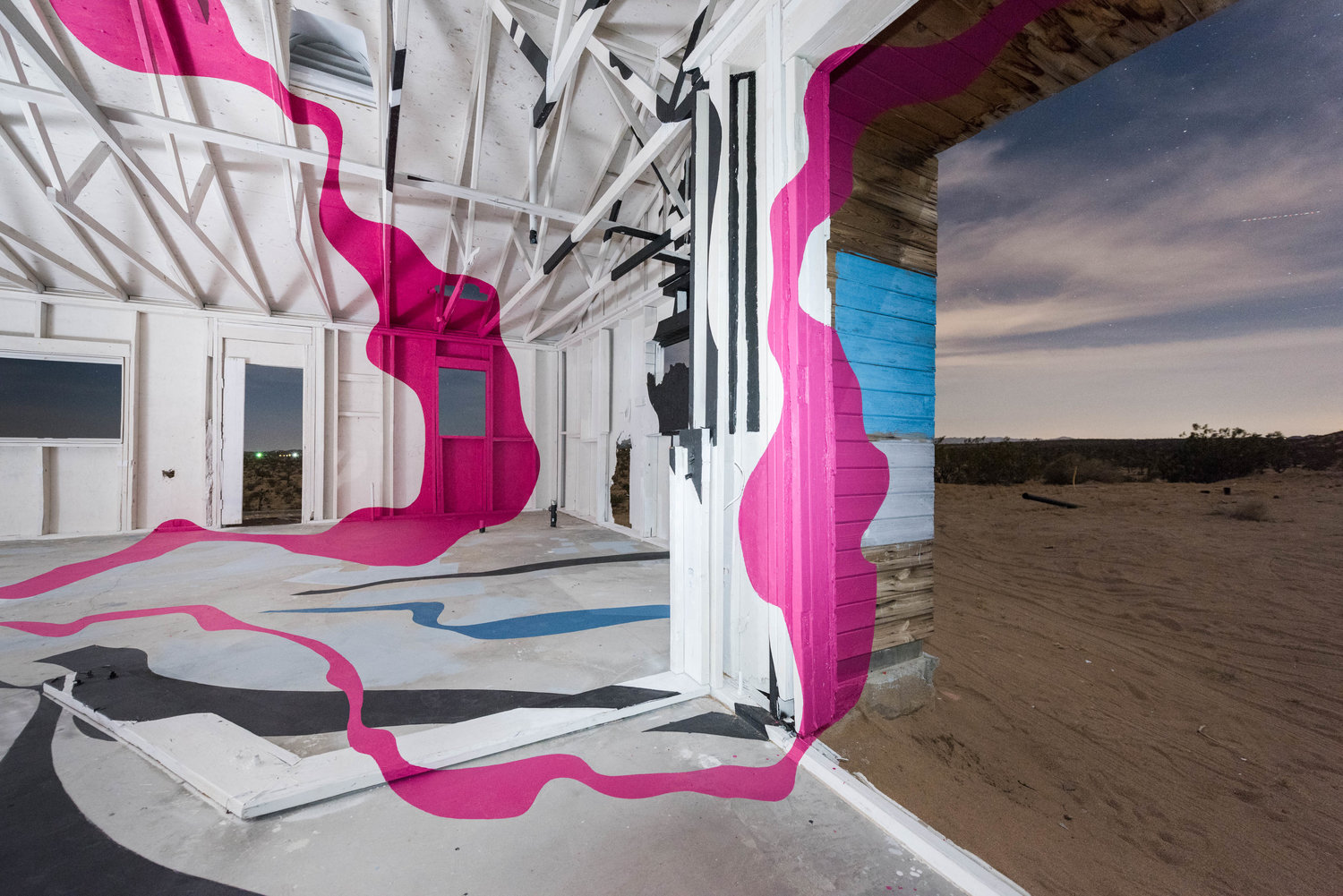
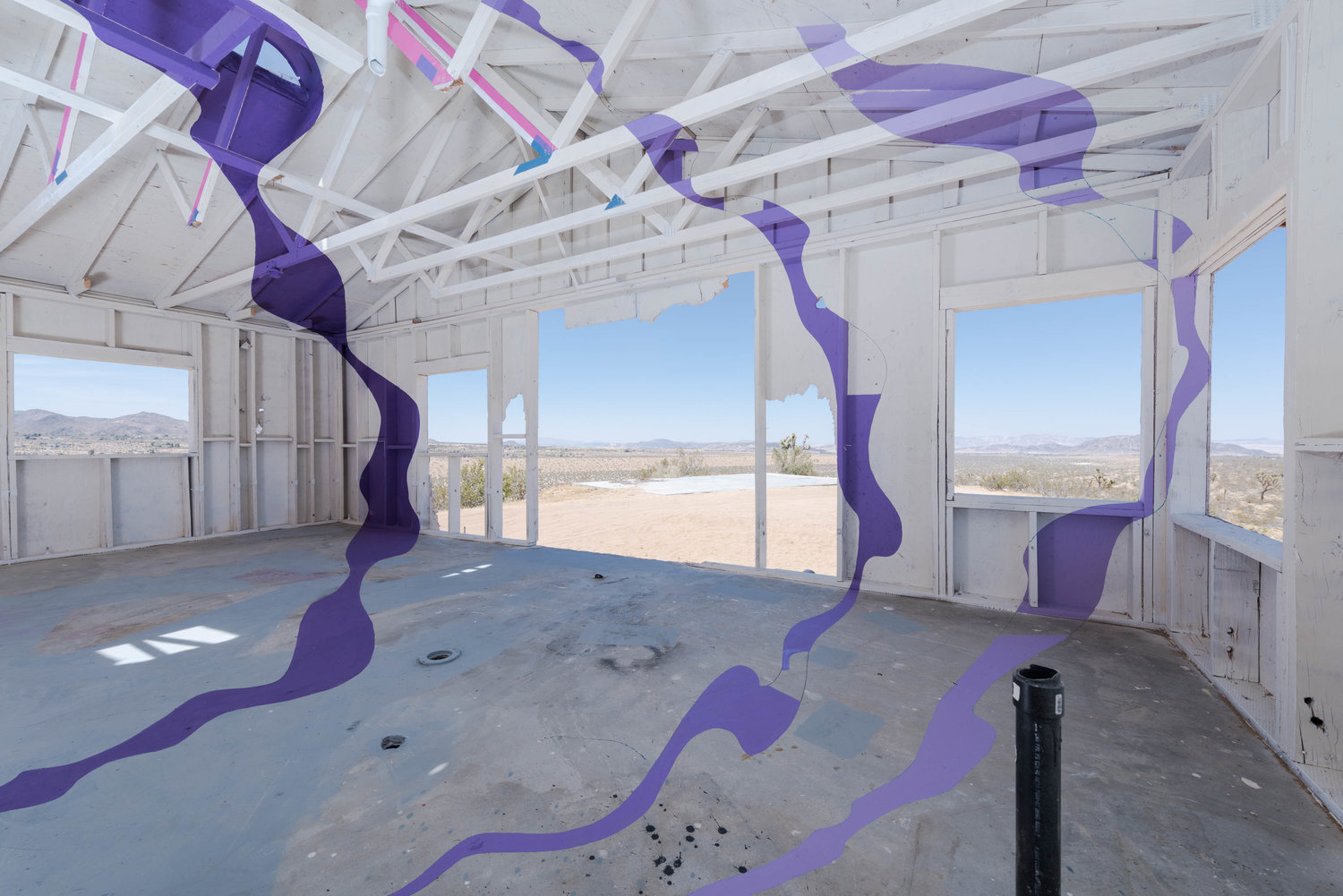
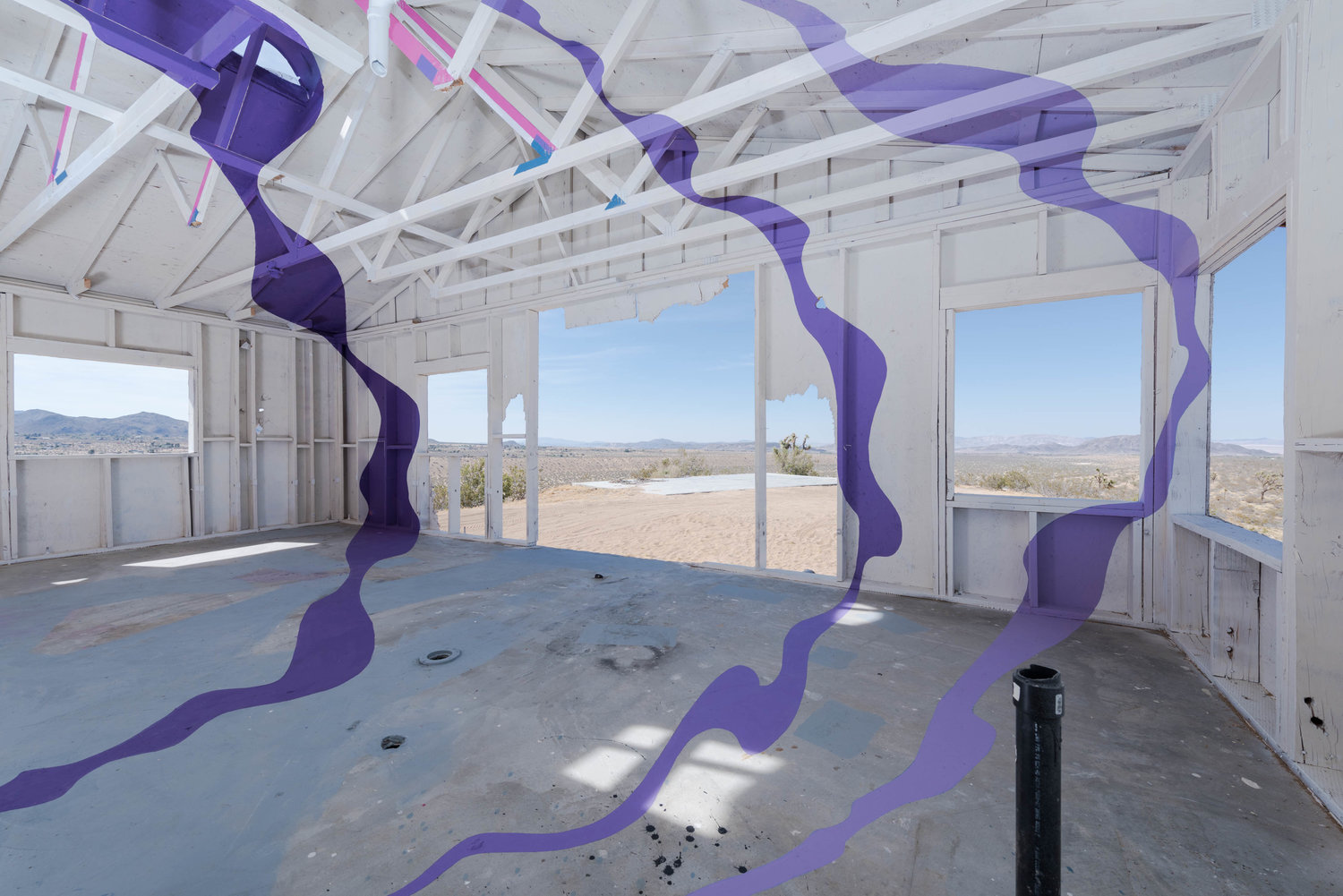



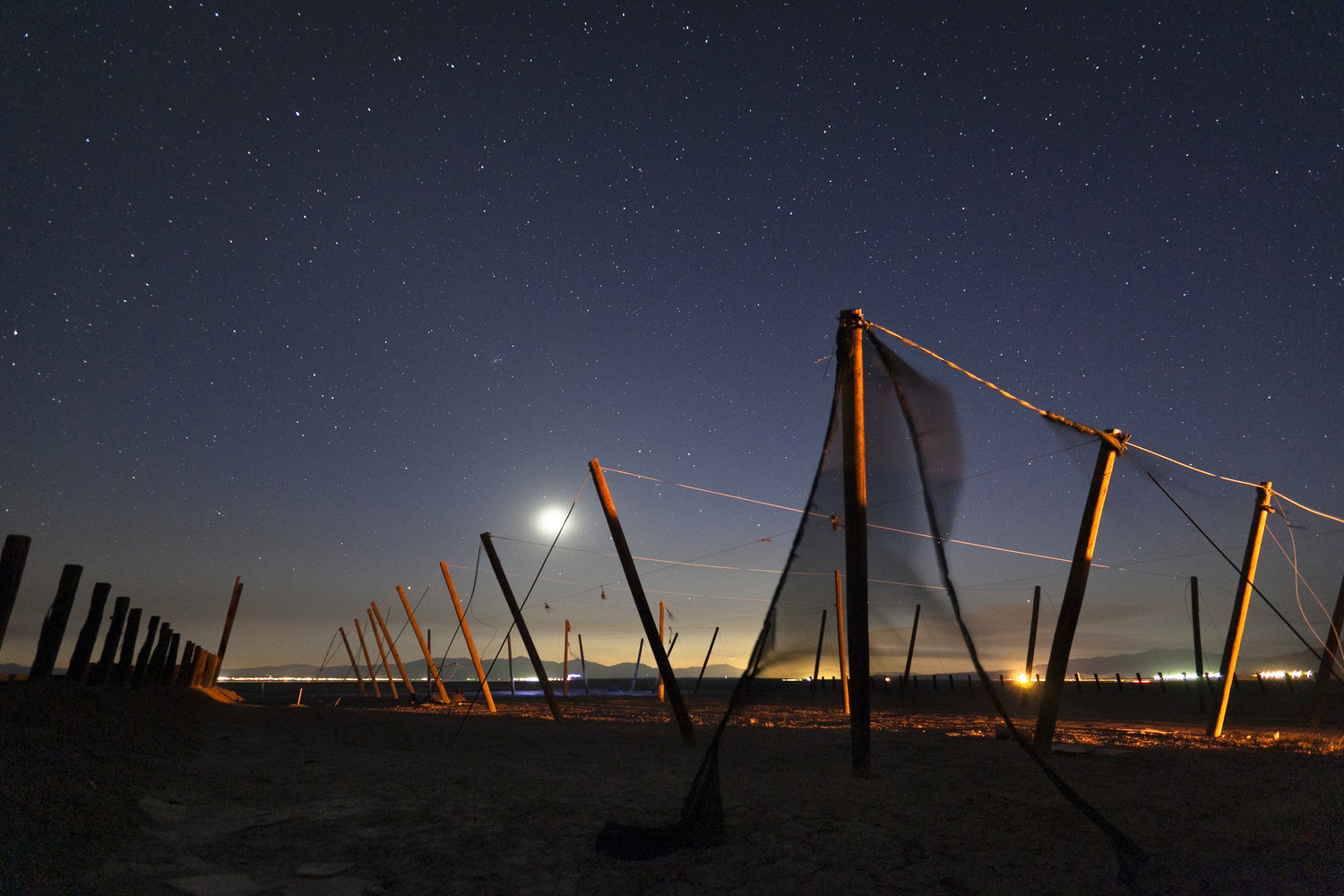
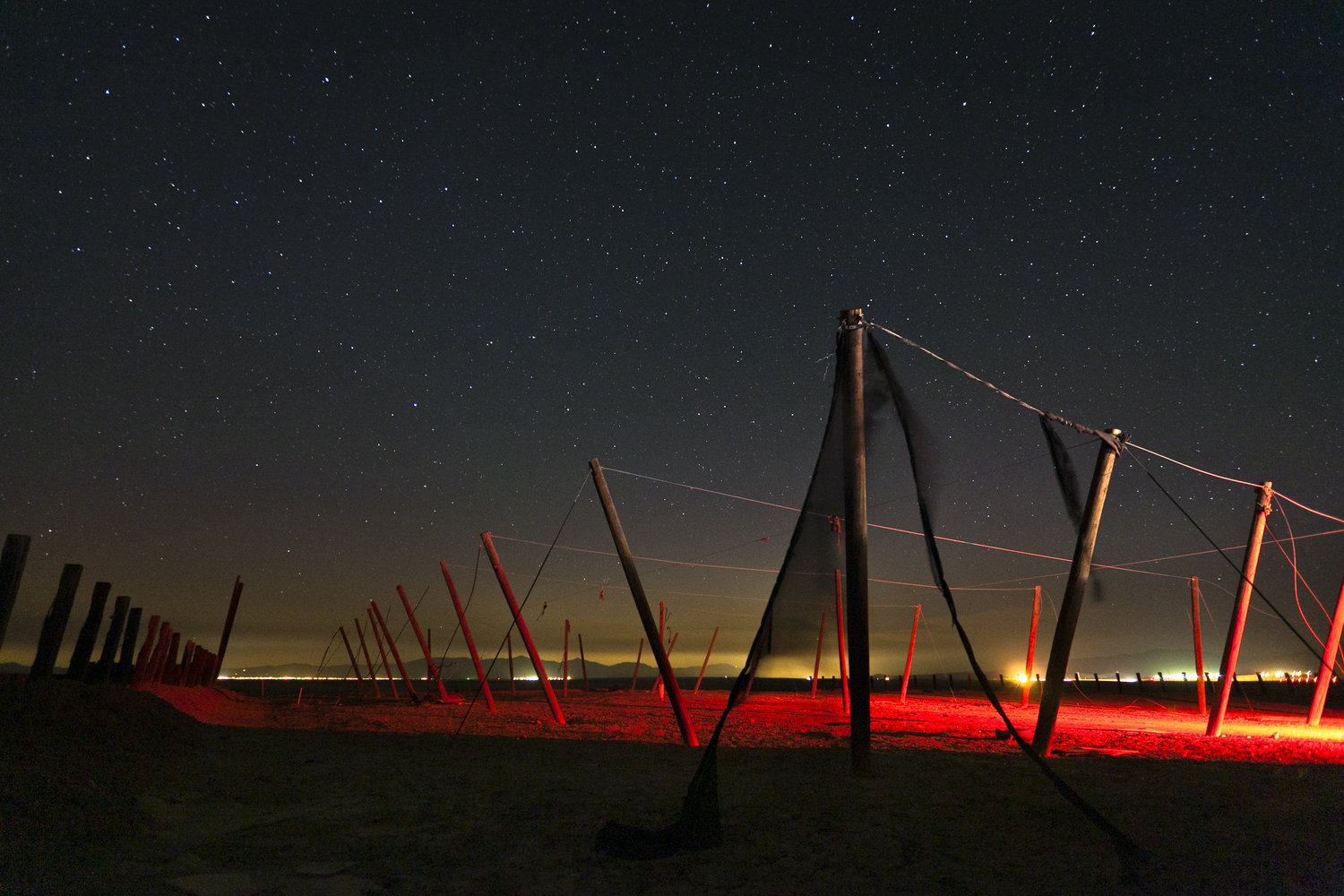












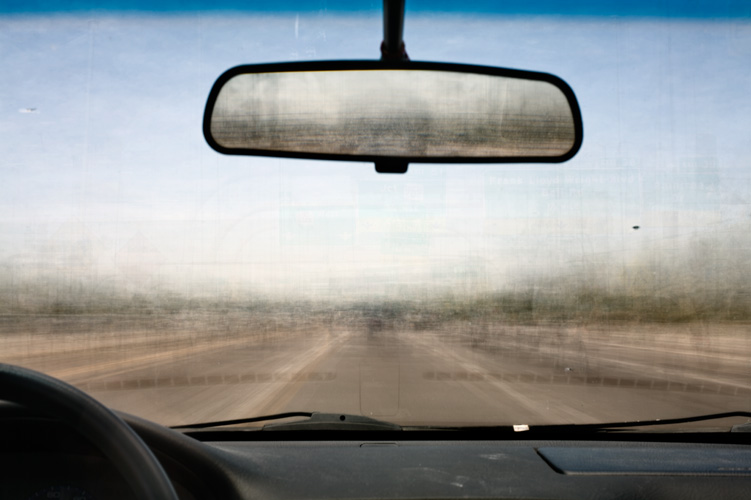










![Carleton Watkins (American, 1829 - 1916) [Piwayac - Vernal Fall - 300 ft. Yo Semite], 1861, Albumen silver print 40.2 × 52.1 cm (15 13/16 × 20 1/2 in.) The J. Paul Getty Museum, Los Angeles](https://images.squarespace-cdn.com/content/v1/51a57431e4b07c0410ab2d9e/1551561412652-S2CPABKZKM39Q1AS9NRQ/CW06216601.jpg)

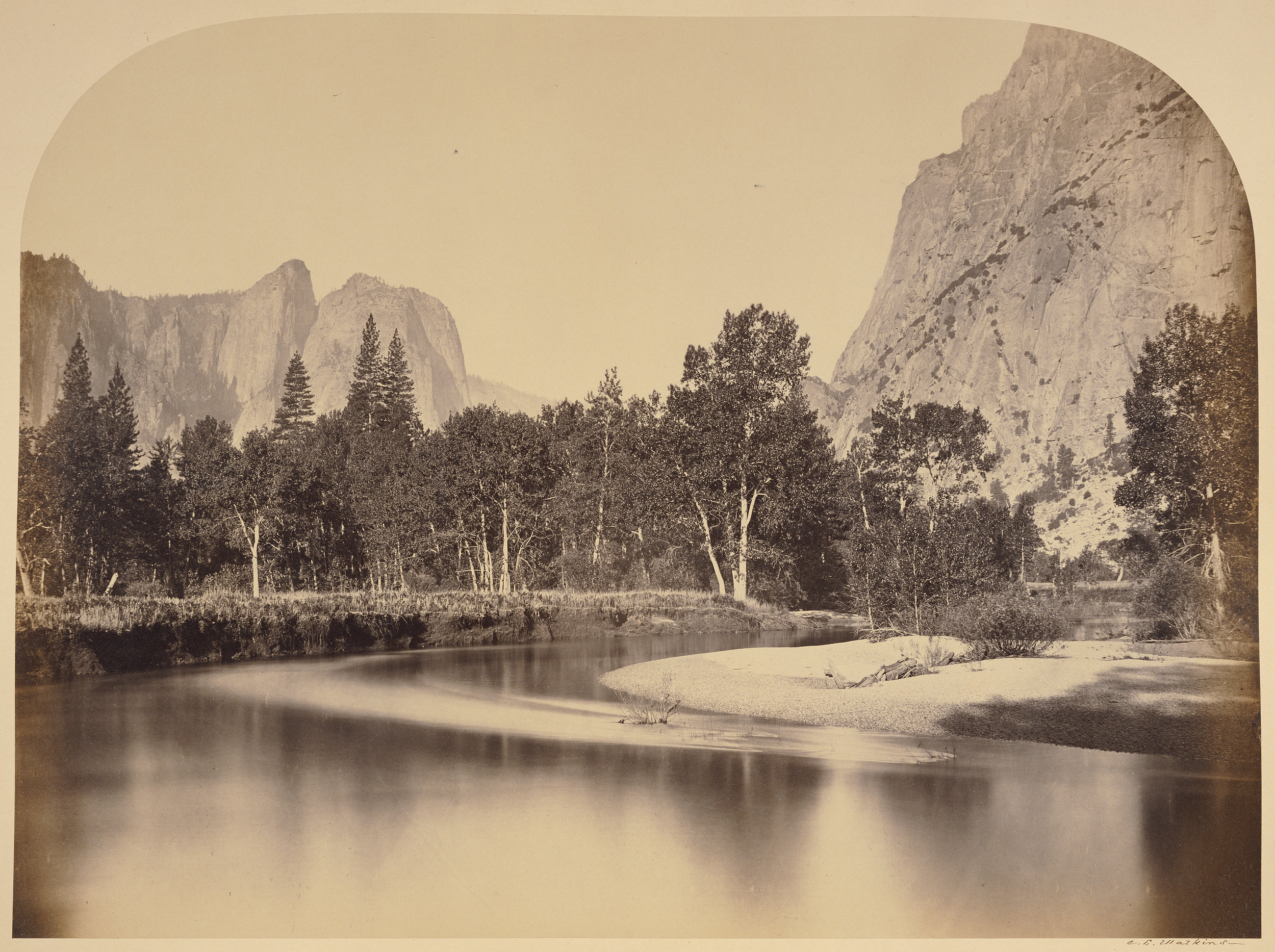
![[Stream with trees and mountains in background, Yosemite Valley, Calif.]](https://images.squarespace-cdn.com/content/v1/51a57431e4b07c0410ab2d9e/1551561495641-6MAL0QYQAIGXQCFYXXSM/CW08117v.jpg)
![Carleton Watkins (American, 1829 - 1916) [The Devil's Slide, Utah], 1873 - 1874, Albumen silver print 52.1 × 39.1 cm (20 1/2 × 15 3/8 in.) The J. Paul Getty Museum, Los Angeles](https://images.squarespace-cdn.com/content/v1/51a57431e4b07c0410ab2d9e/1551561527807-9PRUO8RRC6YBQU5JBPQS/CW06210801.jpg)







